Use ice cube trays to freeze small papaya paste batches and store in zip lock bags to use for another day.
![Papaya Paste - Natural Meat tenderizer - How to make & store papaya paste [+Video] - tenderizes red meat such as beef, lamb, mutton, wild game, etc naturally. Tips + video how to to tenderize with papaya paste www.MasalaHerb.com](https://www.masalaherb.com/wp-content/uploads/2017/09/Papaya-Paste-Natural-Meat-tenderizer-How-to-make-papaya-paste-1-150x150.jpg)
Did you know that Papaya Paste can make your meat super tender?
Papaya paste tenderizes meat deliciously well and very effectively so that the meat melts in your mouth with each bite and the angels start to sing.
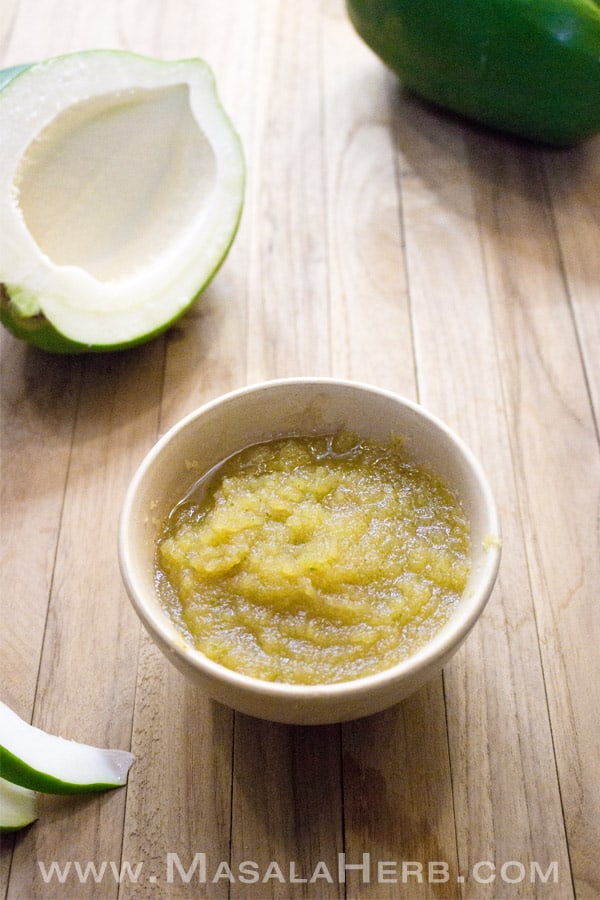
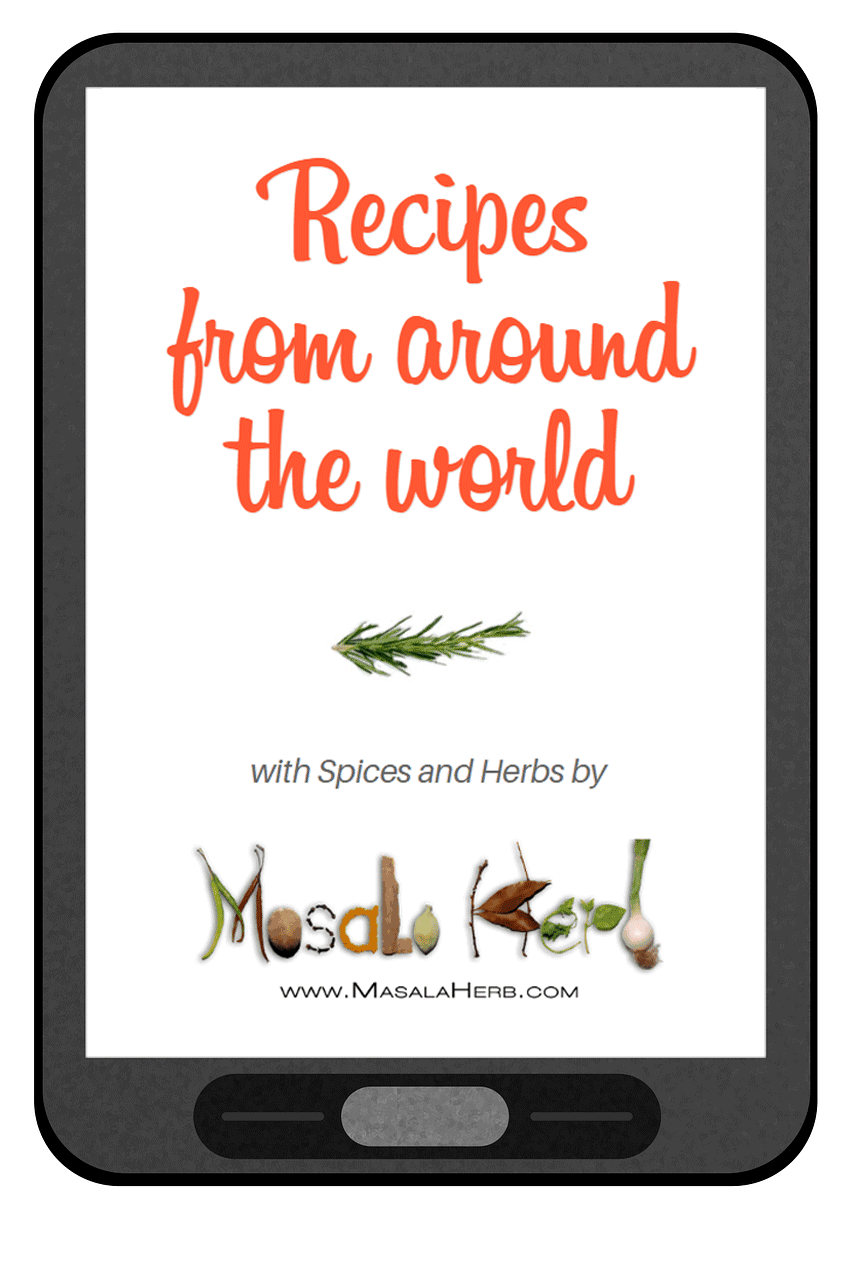
Global Food Recipes
with Spices and Herbs
Free E-Book available for a limited time. Grab yours now and get instantly inspired!
You missed out!
Jump to:
- ❔ What kind of papaya to use to make papaya paste meat tenderizer?
- 🔪 How to make Papaya Paste from scratch?
- 🍱 How to store the Papaya paste?
- 🥣 How to use the Papaya paste to tenderize meat?
- 📜 Why is it important to not leave the papaya paste too long on the meat?
- 🛍️ Where can I buy papaya Paste?
- 👁️ Papaya Paste uses
- 📖 Recipe
- 💬 Comments
The first time I heard papaya was used as a meat tenderizer, I didn't believe it.
How could such a plainly tasting tropical fruit, which has never been much regarded as a super fruit anyway, turn tough meat cuts into a tender soft melt in the mouth meat?
I thought it was a joke.
Even if the papaya paste could make meat soft, it would surely have some kind of a side effect such as making the meat taste weird or that the meat would get tough again while cooking.
My life philosophy is simple: If it's too good to be true, there must be something wrong!
Ironically, I ended up beating my own believes towards the papaya paste.
I was invited one fine night to a friends house.
Delicious looking beef was served up and it had been prepared with papaya paste.
If such an inexpensive fruit, which can be bought easily in most parts of the world, could do such a thing in small dosage.
Obviously I had to try it out for myself.
After having prepared the meat with papaya and cooked it the way I always do, I was completely amazed.
I ate a beef steak, which had turned delicately tasteful, a melt in the mouth moment indeed!
The papaya paste on the meat was, effective, quickly working and very easy to use.
The only problem with that was that I would have to get a fruit every time and use always only a few tablespoons and that would just be kind of a waste to such a great fruit!
Also, not just any papaya fruit is suitable as a meat tenderizer.
So, that is why I came up with a brilliant solution!
❔ What kind of papaya to use to make papaya paste meat tenderizer?
To make a papaya meat tenderizer you need to pick a green/raw papaya.
This is important!
Green papayas are raw and have hard white fruit flesh in the inside.
It's almost tasteless!
Certain food cultures and regional Asian cuisine use green papaya flesh like a squash or pumpkin.
Think Thai green papaya salad for example.
The green Papaya is rich in an enzyme known as Papain and this is the compound which has the ability to break down meat fibers.
So, Papain basically breaks down collagen, which is the main protein that connects tissues.
The greener and raw the papaya, the more papain it contains and the stronger the paste will affect your tough meat cuts.
The highest amount of papain can be found in the papaya skin.
That is why we use a green/raw papaya for tenderizing meat.
Raw papaya is almost tasteless and not sweet at all, which makes it a suitable choice for marinating meat successfully.
By the way, also the leaves of a papaya tree are high in papain and can be used in the same way as the paste.
If you use a papaya tree leaves, then just wash it well and wrap the meat into it, leave it to "marinate", cook and enjoy a perfectly cooked piece of meat.
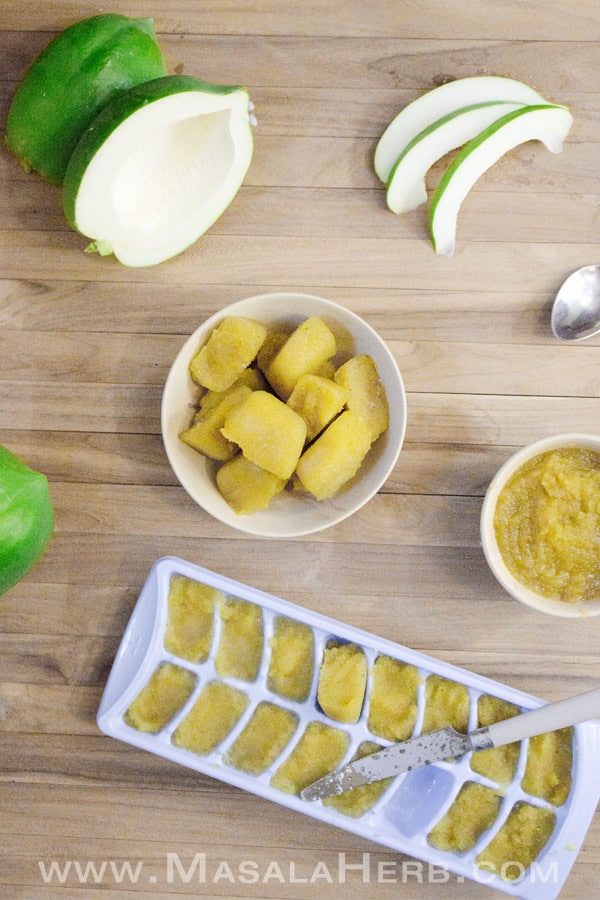
🔪 How to make Papaya Paste from scratch?
Making Papaya Paste is actually child's play.
You just need to turn the papaya into a smooth puree.
You don't need to flavor the papaya paste, you don't need to add any other ingredients.
Just fresh green papaya with the skin and some water, that's the magic!
Just make sure to discard seeds if there are any.
I decided early on to keep it tasteless, as I would use the paste on different kind of red meats, and in that case, I like to season them differently at times.
🍱 How to store the Papaya paste?
Because green/raw papayas are not always easy to be found in the market and because you mostly need only small amounts of the paste to your meat, it makes sense to store the papaya paste for the long run.
While you could keep some in a jar in the fridge, I wouldn't suggest you do do that with a bigger batch of freshly made papaya paste.
Papaya has a high tendency to get moldy, especially the ripe pulp, but unfortunately also the unripe version of the fruit.
So while some people suggest that they kept theirs for a week or two in the fridge without a problem, I wouldn't necessarily suggest you do that because we do add some water to the paste and water makes things to spoil.
Then, how to store big amounts of papaya paste so that non gets wasted and so that it can be removed out in batches whenever needed?
Even if you freeze a whole jar full of papaya paste, you would have to wait for the whole jar to defrost before you could take out just the amount that you need for your meat and that's a bit counter productive, I believe.
So I decided to just freeze the papaya paste by adding small batches of 1-2 tablespoons to ice cube trays.
Then you just need to take them out once frozen and place the papaya paste cubes into zip lock bags.
Whenever, you need to use the paste, take out a cube or two, or whatever quantity needed, let it defrost and treat your meat with the paste.
It's that simple!
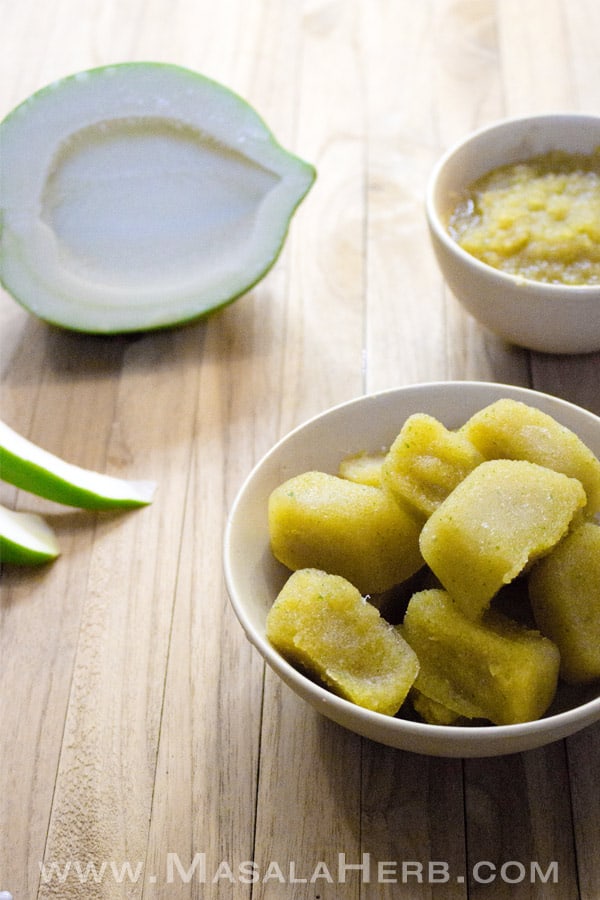
🥣 How to use the Papaya paste to tenderize meat?
The papaya paste is like a paste in addition to your usual marination.
There are two ways how you can prepare and marinate your meat with the papaya paste:
Papaya paste first, marination after that
You keep your meat cuts ready and add the papaya paste to it.
I like to massage the paste into the meat with my fingers.
Then I keep it for a certain period, depending on the meat and amount, and either remove excess papaya paste or leave it on and add my marination to the meat so that the meat sucks in the flavors.
OR
Papaya paste and marination on the meat together
How to marinate the meat and for how long depends on the following:
- meat type - beef, lamb, mutton, pork, rabbit, deer
- meat quantity
- how the meat is cut - in cubes, slices etc
- meat quality and fat amounts
- papaya variation, papaya rawness and if you added the papaya skin to the paste
TIP: Know this, that the leaner the meat, the better the quality, the less the amount and the smaller cut, the less papaya paste you will need and the faster it will take you to tenderize successfully.
That means for example if you use 1 kilogram, not so high quality, undercut beef, cut into big chunks and you want it to be tender after 30 minutes, you would add about 2 defrosted papaya paste cubes to the meat.
It will turn out super tender!
For 2 smaller undercut steaks, I add about 2 tablespoons = ~1 cube of papaya paste to my beef.
Then i let it on for 20 minutes and add my usual steak marination so that it infuses the flavors.
I keep it on for another 40 minutes max before cooking the meat.
So if you are intending to marinate the meat for a longer period to infuse the flavors, you might want to treat the meat first separately with the papaya paste and then take off excess papaya paste.
Or you reduce the papaya paste amount to small quantities so that you can marinate the meat over a longer period of time.
How much papaya paste you use on your meat to tenderize is up to you, there is no fixed amount that I can tell you here.
If you get hold of a smaller very green papaya and you would use only the skin but not the pulp, you would have to cut the time again by half at least because the skin alone is a very strong tenderizer!
So you get my point.
Try to work with small quantities first so that you get the feel for it.
Each meat works differently too.
Try to use my examples to get an idea for how long and how much to use.
Of course, you can also combine other tenderizing solutions with a small amount of papaya paste.
I like to smash my meat first and that is known to break down tough fibers as well.
Then I rub salt into the uncooked steak and ginger paste (if it's an Asian dish), as ginger and salt both help in cutting down the tenderizing waiting period.
After that the add some papaya paste, wait for 20-30 minutes and you are good to cook your steak soft!
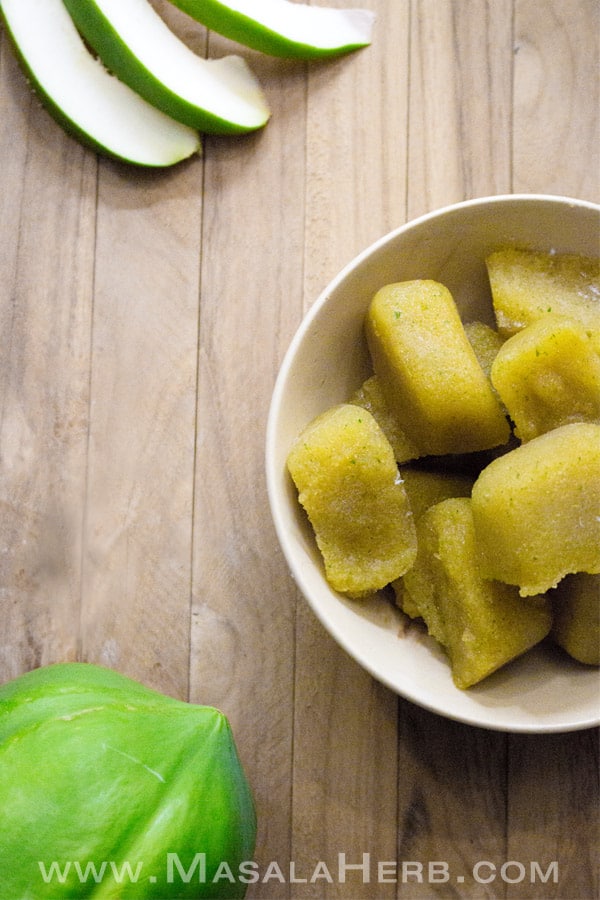
📜 Why is it important to not leave the papaya paste too long on the meat?
Well, the papaya paste is that powerful, that meat fibers can de-integrate completely and you would be left with meat pieces or even an unappetizing meat mash.
Also, keeping higher amounts of papaya paste on the meat for far too long can turn the meat dry while cooking.
That is why you should use the papaya paste in small quantities only and whenever you do that, you would check on the meat after a certain time to see if it has marinated enough.
The moment the papaya paste is heated up, it stops affecting the collagen proteins in the meat but don't worry the meat will guaranteed turn out tender.
🛍️ Where can I buy papaya Paste?
Green Papaya Paste can't be purchased so far.
Food companies haven't developed such a product yet.
However, you can buy a green papaya powder instead which can be used instead of the green papaya paste.
I haven't tried it myself, so I can' t advocate it but at the same time I took a while to search a decent option but ended up finding this green papaya powder.
The manufacturers claim all kinds of weight-loss wonders, which you can safely ignore.
You want a clean product that can be used as a tenderizing agent on your meat.
That's it!
👁️ Papaya Paste uses
Remember you can use the papaya natural meat tenderizer paste with any red meat such as beef, veal, pork, lamb, mutton, goat, rabbit, boar and deer.
There is no point in using papaya paste for chicken, turkey or duck meat as these get easily soft while cooking, depending on the cooking technique and heat.
Dear Reader, how are you intending to use the papaya paste?

📖 Recipe
![Papaya Paste - Natural Meat tenderizer - How to make & store papaya paste [+Video] - tenderizes red meat such as beef, lamb, mutton, wild game, etc naturally. Tips + video how to to tenderize with papaya paste www.MasalaHerb.com](https://www.masalaherb.com/wp-content/uploads/2017/09/Papaya-Paste-Natural-Meat-tenderizer-How-to-make-papaya-paste-1-300x300.jpg)
Papaya Paste - Natural Meat tenderizer Recipe
Use ice cube trays to freeze small papaya paste batches and store in zip lock bags to use for another day.
Ingredients
- 1 small Green Papaya aka raw papaya, the greener the better
- Water
Instructions
- Make sure to pick green papaya (not orange) and wash it well before cutting it up.
- Cut the fresh raw papaya into chunks with the skin on the papaya.
- Then place the chunks into a blender jar with some water and blend into a smooth paste. don't add too much water, just enough so that the blender blades turn.
- Keep ice trays ready and fill up each with 1-2 tablespoons. freeze and once frozen places carefuly into a ziplock bag.
- Use each papaya paste cube whenever needed. See post for how to use and how much to use.
